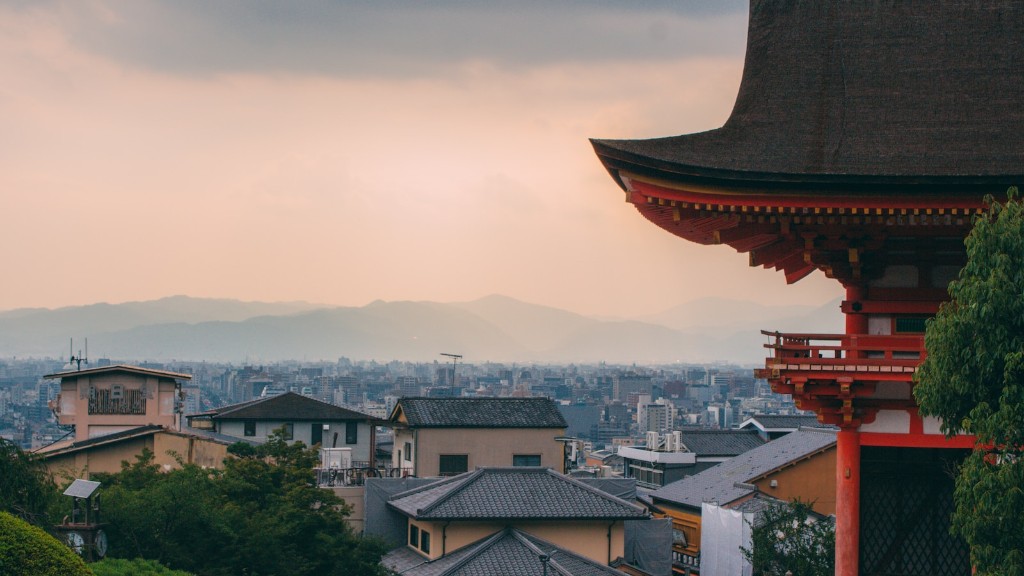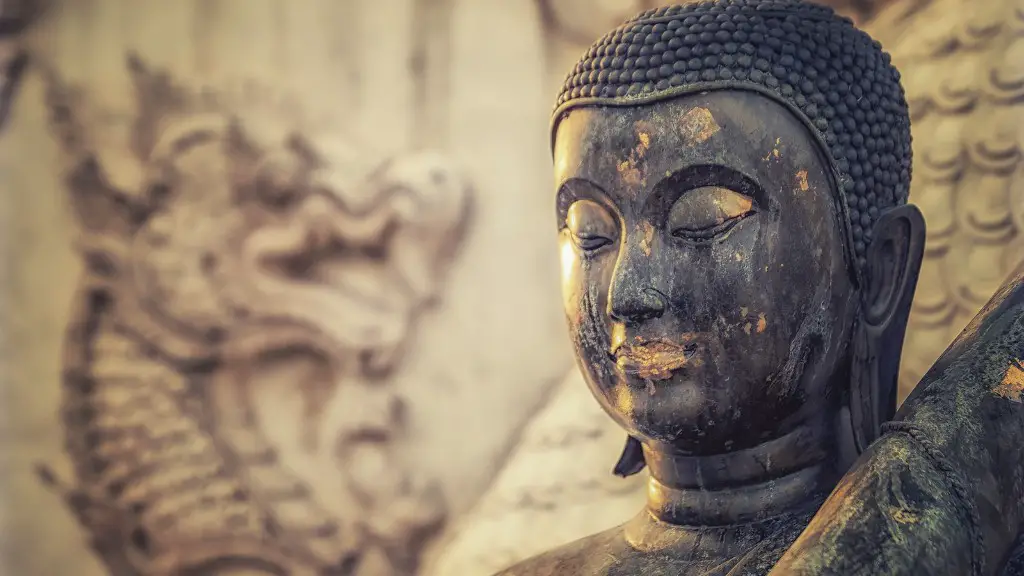There are many different types of Buddhism, each with their own beliefs and practices. Theravada Buddhism and Mahayana Buddhism are two of the most well-known. The two schools of thought are similar in many ways, but there are also some significant differences.
Theravada Buddhism, also known as ” Hinayana ” or ” The Lesser Vehicle,” is the oldest form of Buddhism. It is focused on the teachings of the historical Buddha, Siddhartha Gautama. Theravada Buddhists believe in rebirth and the possibility of achieving Nirvana, or liberation from the cycle of suffering. They place emphasis on individual effort and meditation as the path to enlightenment.
Mahayana Buddhism, also known as “The Greater Vehicle,” is a more diverse tradition that began to develop around the same time as Theravada Buddhism. It includes a range of different schools and sub-traditions. While there is no single founder of Mahayana Buddhism, it is generally seen as an expansion of the original teachings of the Buddha. Mahayana Buddhists believe in the Buddha-nature, the idea that everyone has the potential to achieve Buddhahood. They also emphasize the importance of helping others on the path to enlightenment.
So
There are several key differences between Theravada and Mahayana Buddhism. Perhaps the most fundamental difference is that Mahayana Buddhism emphasizes the bodhisattva ideal, while Theravada does not. A bodhisattva is someone who is on the path to enlightenment but delays their own final enlightenment in order to help others achieve it. In addition, Mahayana Buddhism teaches the idea of the “emptiness” of all things, while Theravada does not. The emptiness doctrine holds that all things lack inherent existence and are therefore empty of any permanent essence. Lastly, Mahayana Buddhism typically includes the worship of Buddhas and bodhisattvas, while Theravada does not.
Why do you think are the differences between Theravada and Mahayana Buddhism?
Theravada Buddhism is focused on the individual’s journey to escape the cycle of reincarnation, while Mahayana Buddhism stresses the importance of staying in Samsara out of compassion for others.
Buddhism is a religion based on the teachings of Siddhartha Gautama, who was born in Nepal in the 6th century BC. Buddhists follow the middle way, a path of moderation between the extremes of self-indulgence and self-mortification. They believe in karma, the law of cause and effect, and in rebirth. Buddhism teaches that the way to end suffering is through detachment, wisdom, and compassion. There are two main branches of Buddhism: Theravada and Mahayana.
What is the main difference between Theravada and Mahayana Buddhism quizlet
The main difference between Theravada and Mahayana Buddhism is their view on the possibility of enlightenment for the laity. Theravada Buddhism claims that only monks can achieve nirvana, while Mahayana Buddhism believes that both monks and laypeople can achieve enlightenment. This difference is significant because it means that Mahayana Buddhism is more inclusive and accessible to more people.
There are significant differences between Mahayana and Theravada Buddhism, but they share much in common. They both emphasize the central teaching of the Noble Fourfold Truth and the Noble Eightfold Path, and they both emphasize the importance of establishing mindfulness as the heart of their practice.
What is the main belief of Mahayana Buddhism?
Mahayana Buddhists believe that if a follower strictly adheres to the right path, it will eventually lead to the redemption of all human beings. On the other hand, Hinayana Buddhists believe that each person is individually responsible for his or her own fate. In addition to these major doctrines, there are also other Buddhist beliefs like ‘Zen Buddhism’ from Japan and the ‘Hindu Tantric Buddhism’ from Tibet.
Theravada Buddhism is one of the oldest form of Buddhism that is still practiced today. It emphasizes on attaining self-liberation through one’s own efforts. Meditation and concentration are vital elements of the way to enlightenment. The ideal road is to dedicate oneself to full-time monastic life.
What is unique about Theravada Buddhism?
Theravada Buddhism places a strong emphasis on monastic life, which sets it apart from other forms of Buddhism. Many practitioners of Theravada Buddhism choose to live as monks or nuns in order to focus on their spiritual development. This commitment to monasticism is one of the defining features of Theravada Buddhism.
Theravada Buddhism is the older of the two major Buddhist traditions, dating back to the time of the Buddha himself. Its central tenet is the attainment of nirvana, the perfect state of enlightenment. In order to achieve this, Theravadins follow the original sutras, or teachings of the Buddha.
Theravada Buddhism places great emphasis on monasticism, and monks play a vital role in the tradition. They are responsible for preserving and transmitting the Buddha’s teachings, and for providing guidance and spiritual support to laypeople. In return, laypeople show their reverence for the monks through acts of material support, such as feeding them and offering them shelter.
When did Buddhism split into Theravada and Mahayana
The two sects of Buddhism split around 300BCE. The Theravada sect consisted of eleven sub-sects, while the Mahayana sect split into seven sub-sects. While there were some differences, each still adhered to the core principles like the Four Noble Truths.
Mahayana and Hinayana are two main ideologies of Buddhism. Mahayana Buddhism considered Gautama Buddha to be a divine being who guided his followers to attain nirvana. On the other hand, Hinayana Buddhists consider Gautama Buddha as an ordinary human being who attained Nirvana.
Which of the following was a major difference between Mahayana and hinayana Theravada Buddhism?
There is a big difference between Mahayana and Hinayana Buddhism when it comes to worshiping deities. Mahayana Buddhism worships bodhisattvas, while Hinayana Buddhist believe that Buddha was a human who found a way to Nirvana. This difference in beliefs leads to different practices and rituals when it comes to worship.
The Mahayana tradition is one of the two main branches of Buddhism. Unlike other Buddhists, Mahayana followers aspire to not only liberate themselves from suffering but also lead other people toward liberation and enlightenment. Mahayana Buddhists believe that everyone has the potential to become a Buddha and that it is our responsibility to help others realize that potential. The Mahayana tradition contains a vast and varied collection of teachings, texts, and practices, but its central goal remains the same: to help all beings awaken to their true nature and find lasting freedom from suffering.
Is Mahayana better than Theravada
There are two main traditions in Buddhism: Theravada and Mahayana. Both traditions share the common basic teachings of the Four Noble Truths and the Eight-fold Path. One tradition is not any better than the other; both traditions seek enlightenment, but their approach is different. Theravada tradition is found mainly in Sri Lanka and Southeast Asia, while Mahayana tradition is found in East Asia, Tibet, and Mongolia.
Bodhisattvas are revered figures in Mahayana Buddhism who are seen as Powerful beings that can intercede on behalf of humans. Because of this, it is common for Mahayana Buddhists to show devotion to both the Buddha and Bodhisattvas. This can take the form of sitting on the floor barefoot and chanting while facing an image of the Buddha. Alternatively, Buddhists may listen to monks chanting from religious texts, often accompanied by instruments. Still others take part in specific prayers to Buddha and/or the Bodhisattvas.
What are the three teachings of Mahayana Buddhism?
The Four Noble Truths are the central teachings of the Buddha. They are:
1. suffering exists;
2. suffering has a cause;
3. suffering can be ended; and
4. there is a path to the end of suffering.
The other elements of the Tripitaka include the Abhidharma (which includes Buddhist psychology and philosophy), the Sutras (which contain the Buddha’s discourses), and the Vinaya (which contains the rules of monastic discipline).
The Buddha taught that the path to enlightenment includes six spiritual qualities, known as the paramitas. These qualities are generosity (dana), morality (sila), patience (ksanti), energy (virya), meditation (dhyana), and wisdom (prajna).
The paramitas are not only qualities to be cultivated by monks and nuns, but are also meant to be developed by lay practitioners. The paramitas provide a blueprint for living a moral and meaningful life, and ultimately lead to liberation from suffering.
Who do Theravada Buddhists worship
Theravada Buddhism is one of the oldest forms of Buddhism, and its followers believe in the teachings of Gautama Buddha. Theravada Buddhism is focused on personal spiritual development and the attainment of Nirvana. Theravada Buddhists believe in the Three Jewels, which are the Buddha, the Dharma (the Buddha’s teachings), and the Sangha (the community of monks and nuns).
The Buddha was a man, not a God. He was a teacher, not a savior. To this day, the Theravada tradition prevails in parts of India, Sri Lanka, Myanmar, Cambodia, and Thailand. This tradition is associated with Theravada Buddhism and figures like the great Emperor Ashoka. The Buddha was a man, not a God. He was a teacher, not a savior. To this day, the Theravada tradition prevails in parts of India, Sri Lanka, Myanmar, Cambodia, and Thailand. This tradition is associated with Theravada Buddhism and figures like the great Emperor Ashoka.
Final Words
There are several differences between the Theravada and Mahayana schools of Buddhism. For starters, Mahayana Buddhism is more inclusive than Theravada Buddhism, teaching that all beings have the potential to achieve enlightenment, while Theravada Buddhism teaches that only monks and nuns can reach this level. Additionally, Mahayana Buddhists emphasize the bodhisattva ideal of compassion and self-sacrifice, while Theravada Buddhists focus more on one’s own individual liberation from suffering. Finally, Mahayana Buddhism has developed a rich tradition of Tantric practices designed to accelerate the path to enlightenment, while Theravada Buddhism has largely eschewed such practices.
The two main types of Buddhism are Theravada and Mahayana. Theravada Buddhism is focused on personal salvation and the Pali Canon. Mahayana Buddhism is focused on helping all sentient beings achieve nirvana and the Mahayana sutras.


